Understanding the 4 Stages of Endometriosis (and Why the Number Doesn’t Always Equal Pain)
Learn about the 4 stages of endometriosis, why stage doesn’t always equal pain, and how early diagnosis and treatment can protect fertility and improve quality of life.
Dr. Smita Sinha
8/16/20255 min read
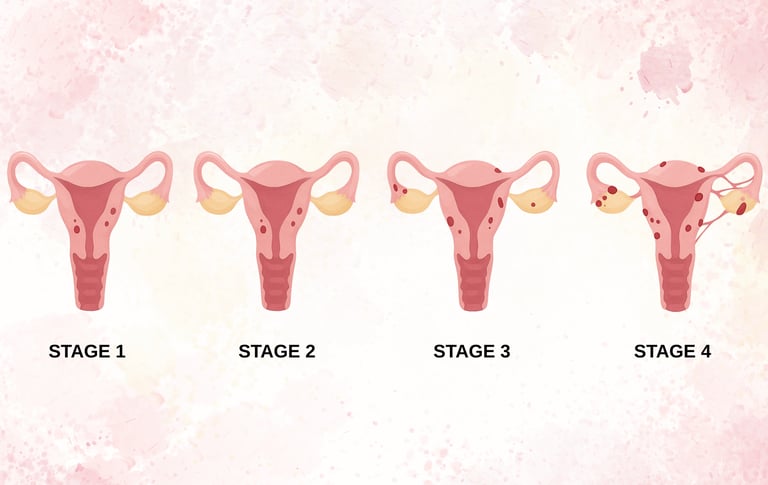

Understanding the 4 Stages of Endometriosis
Endometriosis affects an estimated 1 in 10 women of reproductive age worldwide—and yet, it’s still widely misunderstood. One of the most common misconceptions is that higher stages of endometriosis always mean more severe pain. In reality, many women with stage 1 endometriosis experience debilitating symptoms, while some with stage 4 barely feel anything.
In this article, we break down the stages of endometriosis in a clear and simple way, explain what they really mean, and debunk some of the most common myths surrounding them. Whether you’ve just been diagnosed or you’re trying to understand what your stage means, this guide will help you make informed decisions about your health.
What Are the 4 Stages of Endometriosis?
Endometriosis is classified into four stages by the American Society for Reproductive Medicine. These stages are based on how much endometriotic tissue is present, how deep it goes, and whether organs such as the ovaries or fallopian tubes are affected.
While each stage has its own features, it’s important to remember that the stages of endometriosis were originally designed to help doctors plan treatment—not to predict the amount of pain a person will experience.
🔹 Stage 1 – Minimal
In stage 1, only a few tiny spots of endometriosis are present. These deposits are usually superficial (on the surface) and don’t cause much scarring. Many women only find out they have stage 1 endometriosis when they undergo surgery for another reason, such as unexplained infertility or ovarian cysts.
🔹 Stage 2 – Mild
Stage 2 involves more deposits of endometriosis, and the lesions may extend slightly deeper into the surrounding tissue. There may still be little to no scar tissue, and the ovaries are usually not affected. At this stage, women may begin to experience painful periods or mild pelvic pain.
🔹 Stage 3 – Moderate
Stage 3 involves deeper deposits of endometriosis, including cysts on one or both ovaries. There may also be early signs of organs starting to stick together (a process known as adhesions). This is where symptoms like pelvic pain, painful intercourse and ovulation pain may become more noticeable.
🔹 Stage 4 – Severe
This is the most advanced of the stages of endometriosis. Deep lesions, large endometriotic cysts (known as endometriomas), and significant scar tissue are present. Organs such as the ovaries, uterus, bladder or bowel may be stuck together, making this stage more complex from a surgical perspective. However—and this is crucial to understand—a higher stage does not always mean worse pain.
Why Knowing the Stage Still Matters
Even though stage doesn’t predict pain, it still plays an important role in guiding treatment and protecting long-term health:
Stage 1–2:
Early treatment can reduce inflammation and relieve symptoms before they escalate
Stage 3–4:
May require more advanced treatment, especially if fertility is affected
All stages:
Early diagnosis helps preserve fertility, prevent organ damage, and improve quality of life
Regardless of which of the stages of endometriosis a woman is diagnosed with, timely treatment can make a significant difference.
Treatment Options by Stage
While every case is individual, here is a general overview of how the stages of endometriosis influence treatment decisions:
🔹 Stage 1–2 (Minimal / Mild)
NSAIDs or pain relief medication
Hormonal treatments (e.g. oral contraceptive pill, hormonal IUD, GnRH analogues)
Monitoring and regular follow-up
🔹 Stage 3–4 (Moderate / Severe)
May require excision surgery, especially if there are ovarian cysts or organs are affected
Surgery is often considered if fertility is a priority
Hormonal therapies may still be used before or after surgery to reduce recurrence
In some cases, a multi-disciplinary team (e.g. gynaecologist, fertility specialist, colorectal surgeon) may be required
📞 Need Help?
To speak with a compassionate and experienced specialist, contact Dr. Smita, Consultant Gynaecologist at KPJ Selangor Specialist Hospital, Shah Alam.
💬 WhatsApp us at +60165833302 to book an appointment and get the personalised care you deserve.


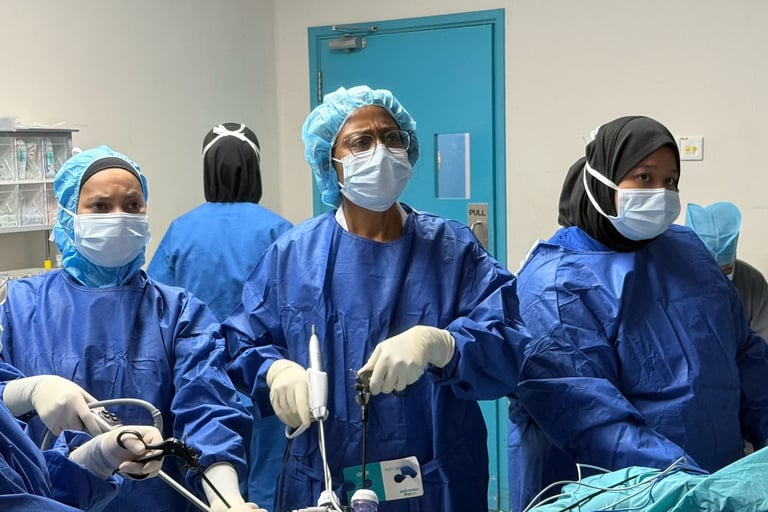


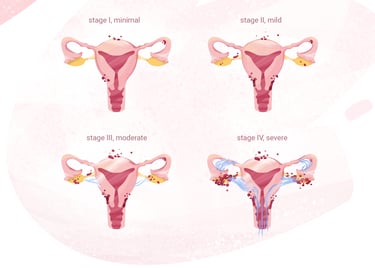
Myth: Higher Stage = More Pain (Not Always True)
One of the biggest myths about the stages of endometriosis is that the higher the stage, the worse the symptoms. In reality, the amount of endometriosis is not always linked to the level of pain experienced.
Some women with stage 1 disease have severe period pain and chronic pelvic discomfort, while others with stage 4 disease may have little or no noticeable symptoms. This is why doctors don’t base treatment purely on the stage. Instead, they look at:
Location of the lesions (e.g. near nerves, bladder, bowel)
Depth of tissue involvement
Presence of cysts or adhesions
The patient’s symptoms and goals (e.g. pain relief, fertility)
Understanding the stages of endometriosis provides structure for diagnosis and treatment planning—but it’s only one piece of a much bigger puzzle.


Final Takeaway
Understanding the stages of endometriosis helps patients make informed decisions—but the number alone doesn’t tell the full story. Pain levels, lesion location, fertility plans, and individual goals all play a role in finding the most appropriate treatment.
If you’re experiencing painful periods, chronic pelvic pain, or suspect that you may have endometriosis, don’t ignore the signs.
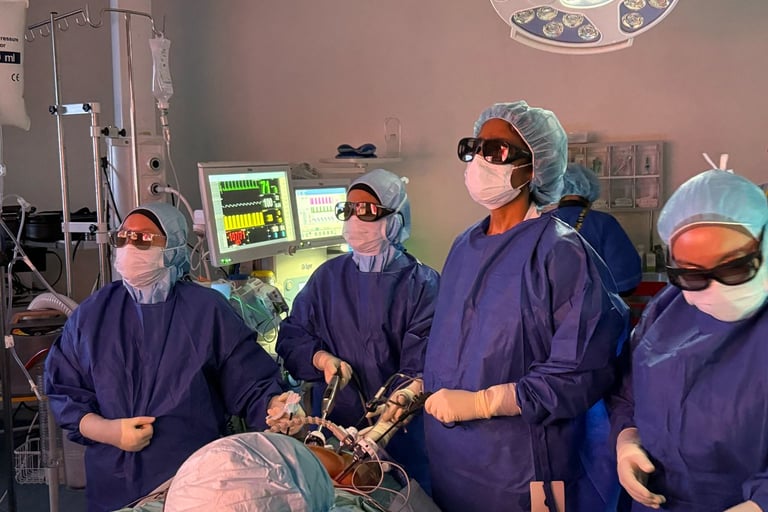

Practical Advice: What Should You Do if You’re Diagnosed?
Whether you’ve just been diagnosed with endometriosis or are trying to understand your current stage, here are some practical steps to take:
✔ Track Your Symptoms
Keep a diary of your pain, cycle, and any unusual symptoms. This information helps your doctor personalise your treatment.
✔ Ask Questions About Your Stage
Don’t hesitate to ask your doctor where the lesions are located, how deep they go, and what treatment options suit your goals (e.g. pain control, fertility).
✔ Don’t Wait Until Symptoms Get Worse
Even early-stage endometriosis can progress and affect fertility over time. The sooner you begin treatment, the better the long-term outcomes.
✔ Build a Support Team
Managing endometriosis often requires collaborative care. A gynaecologist with experience in complex endometriosis can help you get the right treatment at the right time.
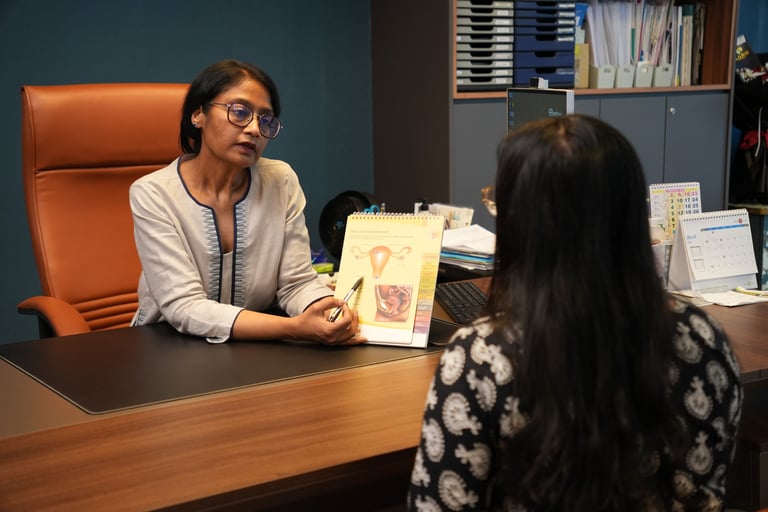

Contact Us
Clinic: +60355433285
Whatsapp: +60165833302
Email: smitaobgyn@gmail.com


Why Us?
About Us
Services
Endometriosis
Robotic Surgery
Articles
